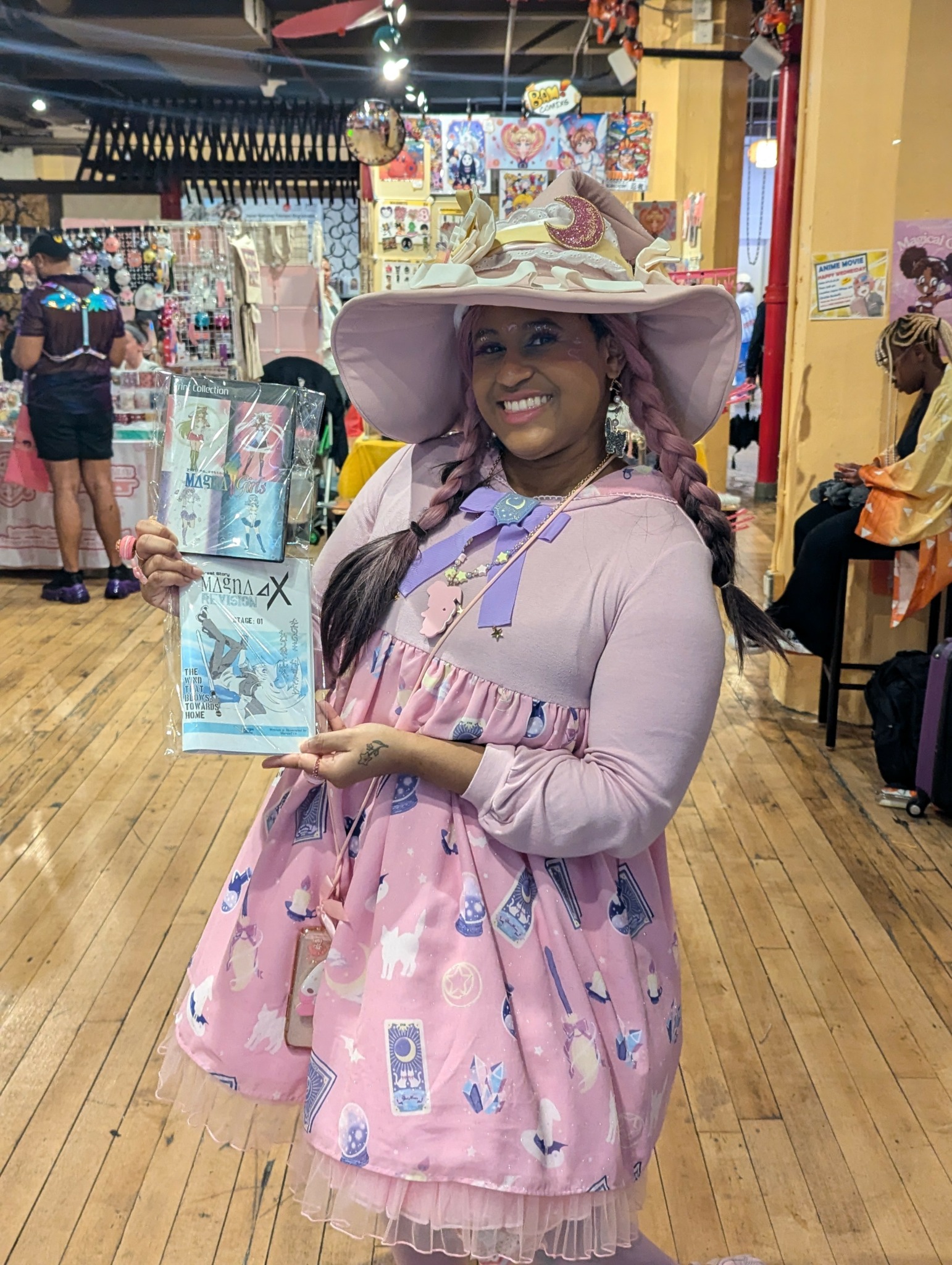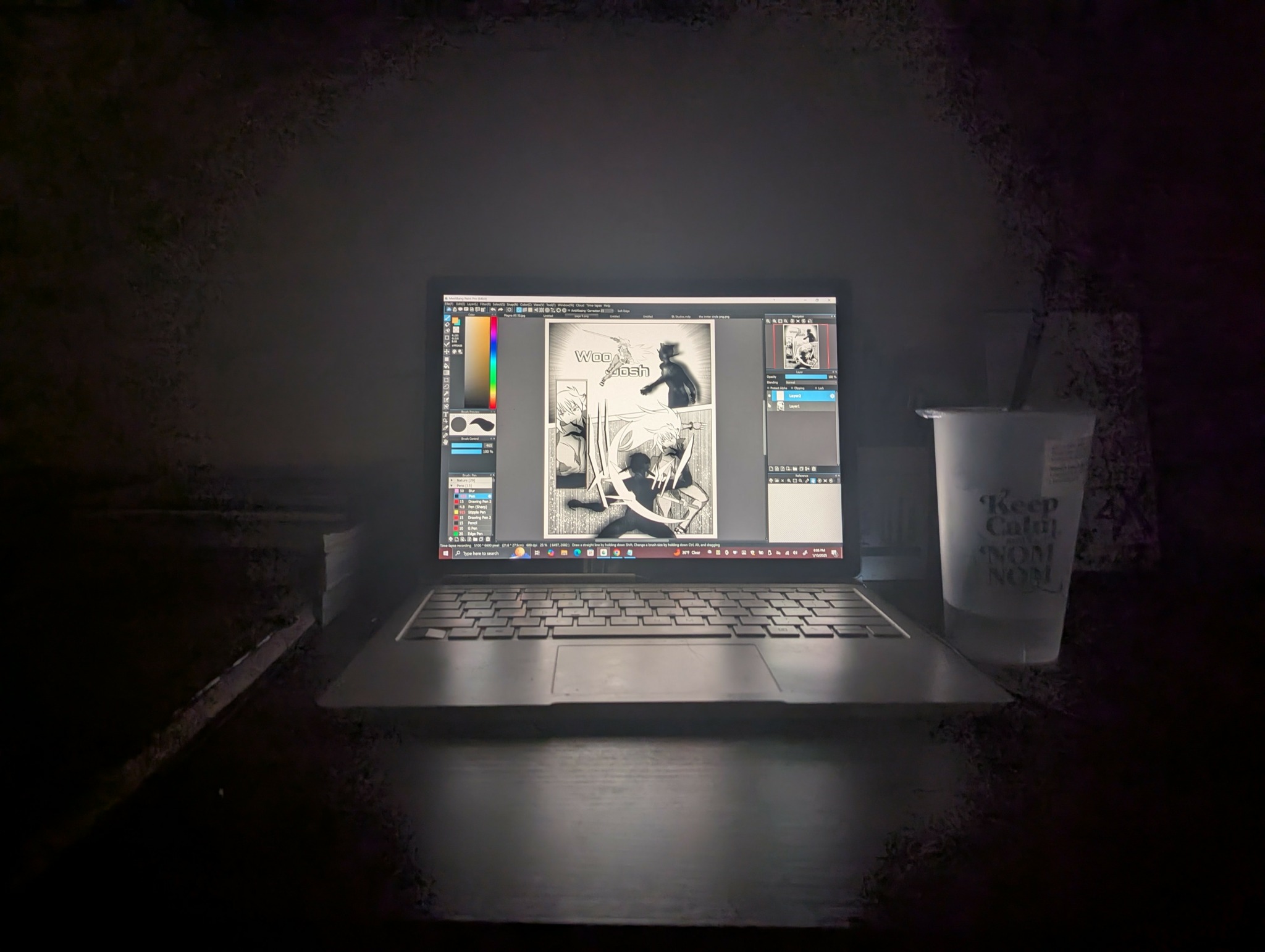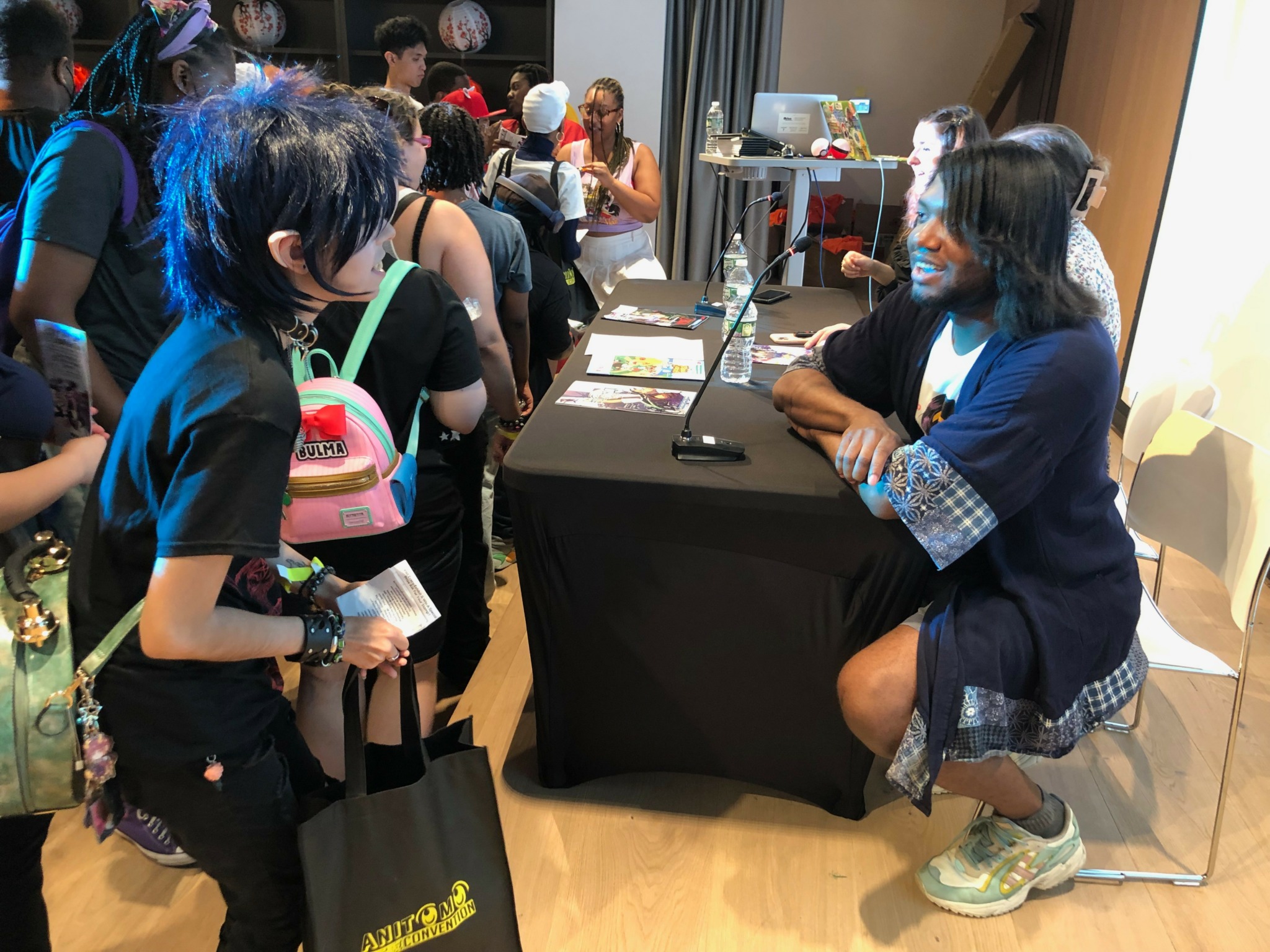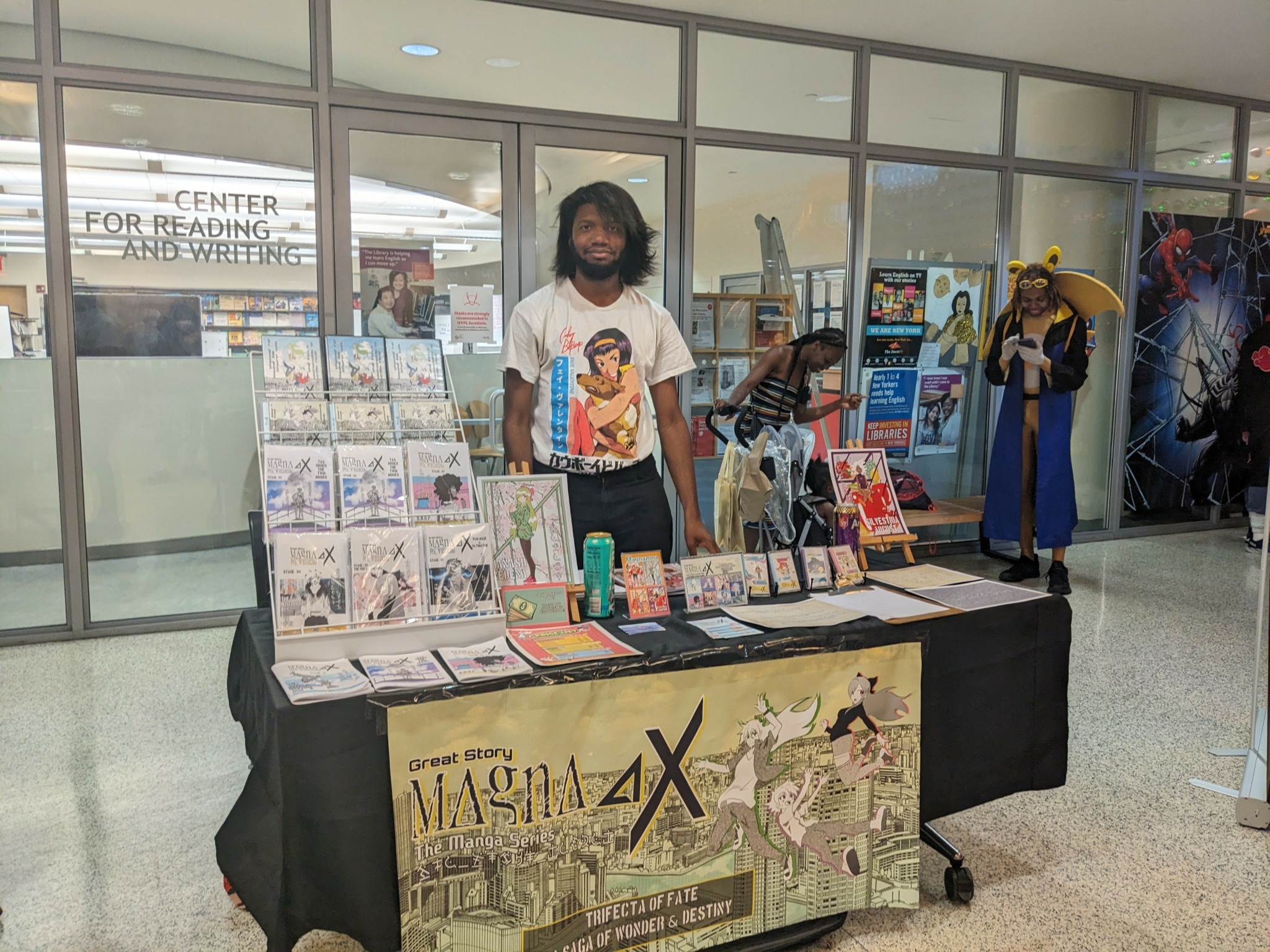We’re excited to introduce you to the always interesting and insightful Emmanuel Knight. We hope you’ll enjoy our conversation with Emmanuel below.
Emmanuel, looking forward to hearing all of your stories today. Did you always know you wanted to pursue a creative or artistic career? When did you first know?
My creative spirit was ignited early. Growing up in the ’90s, I was always drawing, creating stories with my toys, and building worlds out of cardboard. But it was when I discovered anime at age eight that something clicked. Seeing those stories unfold on screen, I knew—this is what I wanted to do. I even made a promise to myself in my bathroom mirror that I would tell my own stories like that someday. This was long before I knew what anime and manga were! That promise sparked something real, and I immediately began creating my own stories, which eventually led to Magna AX, the manga I’m still working on today.
That initial spark was further fueled in the early 2000s by JRPGs (Japanese Role Playing Games), particularly Tales of Eternia. It was everything I loved about anime, x10: compelling characters, emotional narratives, and stunning visuals.
But the moment I truly saw the possibility of making this a profession was at my first New York Comic Con in 2006. Walking through Artist Alley, surrounded by creators selling their work, was awe-inspiring. Then, at a TokyoPop panel, M. Alice LeGrow spoke about publishing manga as an American artist. That was a revelation. Having only experienced manga from Japan, hearing an American artist talk about her journey made it feel tangible, and achievable. I sat there, completely captivated, realizing, “God… it’s possible.”
Great, appreciate you sharing that with us. Before we ask you to share more of your insights, can you take a moment to introduce yourself and how you got to where you are today to our readers.
I’m a Brooklyn-born and raised illustrator and manga artist, and the creator and self-publisher of Magna AX, a character-driven, urban fantasy manga series that blends action, adventure, and mystery. It’s designed to resonate with a broad audience, from seasoned manga readers to newcomers alike, and it channels the spirit of the ’90s/2000s anime and JRPGs that shaped me.
I got started professionally in 2012 as a muralist painter & art facilitator for a nonprofit organization based in Brooklyn that taught youth from marginalized neighborhoods to plan and paint murals in their neighborhoods based on social justice topics important to them. I did that for four years before I left Brooklyn and moved to Manhattan, to Chelsea, via the Artist lottery. That’s a funny story because it was originally an artist lottery for musicians, but we managed to charm (beg) our way into getting an apartment offered to us. Right away, we began to scheme how we could use our space to support the local artist community. We started a Homemade speakeasy exhibition space in our apartment. We would move our furniture out of the living room into our bedrooms and hang up art and installations all over our walls, and we would transform our community room into a space for musicians, poets and film screenings. I did that for eight years while freelancing and holding other part time jobs (retail, theater management, art instructor) until I decided it was time to make the leap and pursue Manga.
After many years of revisions and after moving back to Brooklyn, I began to sell Magna AX at conventions and art fairs across the United States. At these cons, I offer a variety of media from manga zines and illustrations to hanging scrolls and even motion comics packaged in retro VHS tapes. These products offer fans a way to connect with my work and own a piece of the Magna AX universe.
What I hope potential followers, fans, and clients take away is this: Magna AX isn’t just a manga series—it’s my lifelong passion, and I’m constantly evolving to give my audience new, exciting ways to experience my stories. If you enjoy action-packed adventures mixed with emotional depth and rich character development, I think we’re going to get along great. Keep an eye on my social media for updates, and if you like what you see, I hope you’ll join me on my Creative Odyssey.
How can we best help foster a strong, supportive environment for artists and creatives?
I really like this question. Many publishers and conventions are not creating opportunities for new voices, especially voices of color. I don’t think it’s intentional, but I do think there’s an implicit bias impacting who gets selected. As a creative curator for Anitomo Con, I try hard to be as inclusive as possible, and I’m grateful when I see other spaces doing that too.
I also think it’s important that the general public knows how much it means to artists when you like their work. Don’t ever assume that your praise falls on deaf ears. Art is meant to evoke feeling and conversation, so don’t hold out. On top of the usual “likes” and follows, subscribes and shares, talk to us! Let us know what you think. Send a DM – send a voice note! I think that enriches the relationship between you and the artist, and something beautiful can come out of that. (And don’t buy AI art.) It’s really important that there’s a reciprocal conversation and that we don’t talk at each other, but to each other. And that’s how you grow both as a supporter and as an artist. Don’t wait until they’re famous to be like, “Oh, I was there when they started!” You could be with them throughout the journey.
Any resources you can share with us that might be helpful to other creatives?
Oh, so many. When I started, anime and manga were just beginning to get a foothold in America. There were some resources, but they weren’t as commercialized or widely available as they are now. I had to teach myself by going to the library, printing pictures of my favorite characters, and borrowing books related to art or the genre. As I grew older, anime became more fluid and available through popular demand. Looking back and seeing where I am now, it’s easy to feel like I was born too early to utilize the resources available. I know that’s not the case. My experiences helped shape the person I am today. Now, I can internalize the information much faster, and the journey has become smoother because of the foundation I built. You never stop learning. Things get easier as you find your learning methods.
The internet is a great tool for research, videos, essays, courses, etc, and also for sharing your work. But, it’s important to mix both online and offline efforts.
My biggest resource has always been my community. I believe in the power of talking to people, telling them who you are, what you’re doing, and where you want to be. When you’re genuine, people feel compelled to find ways to connect with you. The resources you need will come to you as you move forward on your creative journey. You might not always know where they’ll come from, but they’ll appear as you take each step toward your destination. Put yourself in spaces where you’re surrounded by people doing the things you want to do—or something closely related. Chances are, they may have friends or colleagues who do what you do. Don’t be afraid to ask questions, no matter how “dumb” you think they are! You’re learning, and it’s all part of the process. Ask around, seek advice, and build those connections.
You’re collecting pieces of a puzzle, slowly but surely, and those pieces will come together and turn you into who you desire to be.
Contact Info:
- Website: https://www.magnaax.com/
- Instagram: https://www.instagram.com/mannyk714/
- Twitter: https://bsky.app/profile/manny714.bsky.social
- Other: https://emmanuelknight.carrd.co/











